Toph Hat
Materials: Raw white dorset fleece from Manitoba shorn in 2021 was washed and spun by artist using an Ashford Traditional Wheel. Skeins were dyed using sun jars and garden plants.
A blue-grey colour was achieved with purple chokecherry leaves from the artist’s garden and iron.
The yellow and white yarn was created from Dyer’s Coreopsis flowers gathered from a fellow participant’s garden. The dye bath was poured over the pre-mordanted skein in a jar and did not fully penetrate to the bottom.
Description: The white-yellow skein of yarn was an unintentional result of dyeing; a “Happy Accident”. I thought the best use of this yarn would be short rows to highlight the colour changes. I paired it with a second available colour of dorset yarn that I thought had the best contrast. Based on my available meterage and yarn weight, I chose a sideways knit hat designed by Woolly Wormhead in the Elemental Collection I had. This design is Toph.
Daphne’s Sweater
Materials: Raw Shetland wool shorn from Daphne of Leafhaven Shetlands in 2020. Washed and spun by artist using an Ashford Traditional Wheel. During the cleaning phase, the whitest and darkest locks were separated out to become their own yarns. Spun as a traditional 3-ply yarn.
A small skein of yarn was dyed yellow with dried marigold petals, from the artist’s 2020 garden, using the sun jar method in a sunny window.
Description: The sweater was custom designed by the artist using the contiguous shoulder method and knit from the top down. It includes simple flower elements, reminiscent of field flowers, around the waist and sideways hem. The upper body was worked with alternating skeins of the main yarn. The lower body was started in the darker yarn to allow for greater contrast when working the flower stitch on the waits band. Waist band flowers worked in marigolds-yellow and white. The hem was worked sideways using a flower lace garter and micro points as well as splits at the hips. The neckline was worked in white yarn with a scalloped crochet stitch. A slipped stitch garter stitch was used for the cuffs to coordinate with the hem, but primarily because the artist likes tighter cuffs.
Battle-Weary Dragon Shawl
Materials: The artist purchased a batt of mixed Shetland colours and a batt of Shetland blended with alpaca from Prairie’s Edge Wool Farm in Manitoba. Both were spun up using an Ashford Traditional wheel. The Shetland was made into a 2-ply yarn and the blend was made as a 3-ply yarn. Glass crow beads in a deep red were purchased from the Winnipeg Trading Post. These are close to a 2/0 size. A small length of alpaca handspun yarn was used for the bind off.
Description: The artist had been wanting to try knitting her own Battle-Weary Dragon shawl design in a heavier weight of yarn. The marled yarn lended itself well to the textured body and she knew the the solid colour would work well for the scales. The dark blood-red beads were chosen to fit the inspiration of the Battle-Weary dragon. The artist aimed to maximize use of each yarn and ran out of yarn for the bind-off. Fortunately she had plenty of handspun Manitoba alpaca yarn sitting around from previous projects to finish the shawl without undoing any of the knitting.
Chocolat Mittens
Materials: The artist purchased a skein of dark brown yarn from Ferme Fiola Farm shorn from a Rambouillet-Ridout Arcott sheep (Chocolat) and spun by the local mill at Long Way Homestead.
Skein of white yarn was spun from a Manitoba Dorset fleece using a suspended spindle made by Manitoba maker Ed Tabachek. Most of the spinning was worked while walking outside at a local dog park.
Description: The artist typically allows the yarn to dictate the project. In this case, the Chocolat yarn had been sitting on a book shelf near her spinning wheels, forlorn because it was wool from 2018 (recently purchased/rescued by the artist) that wished to be formed into something new. One day it demanded to be paired with a solid white yarn for mittens. The artist pulled out various skeins from the 2021 project and found one that best matched. A local thrift store book find provided a colourwork mitten pattern in an appropriate yarn weight and the artist resigned herself to stranded knitting (even though it is her least favourite technique) for a thicker mitten. These are usually worn with a second knit liner mitten. They have been blocked only by wearing this winter and have endured many hours of shoveling snow.


